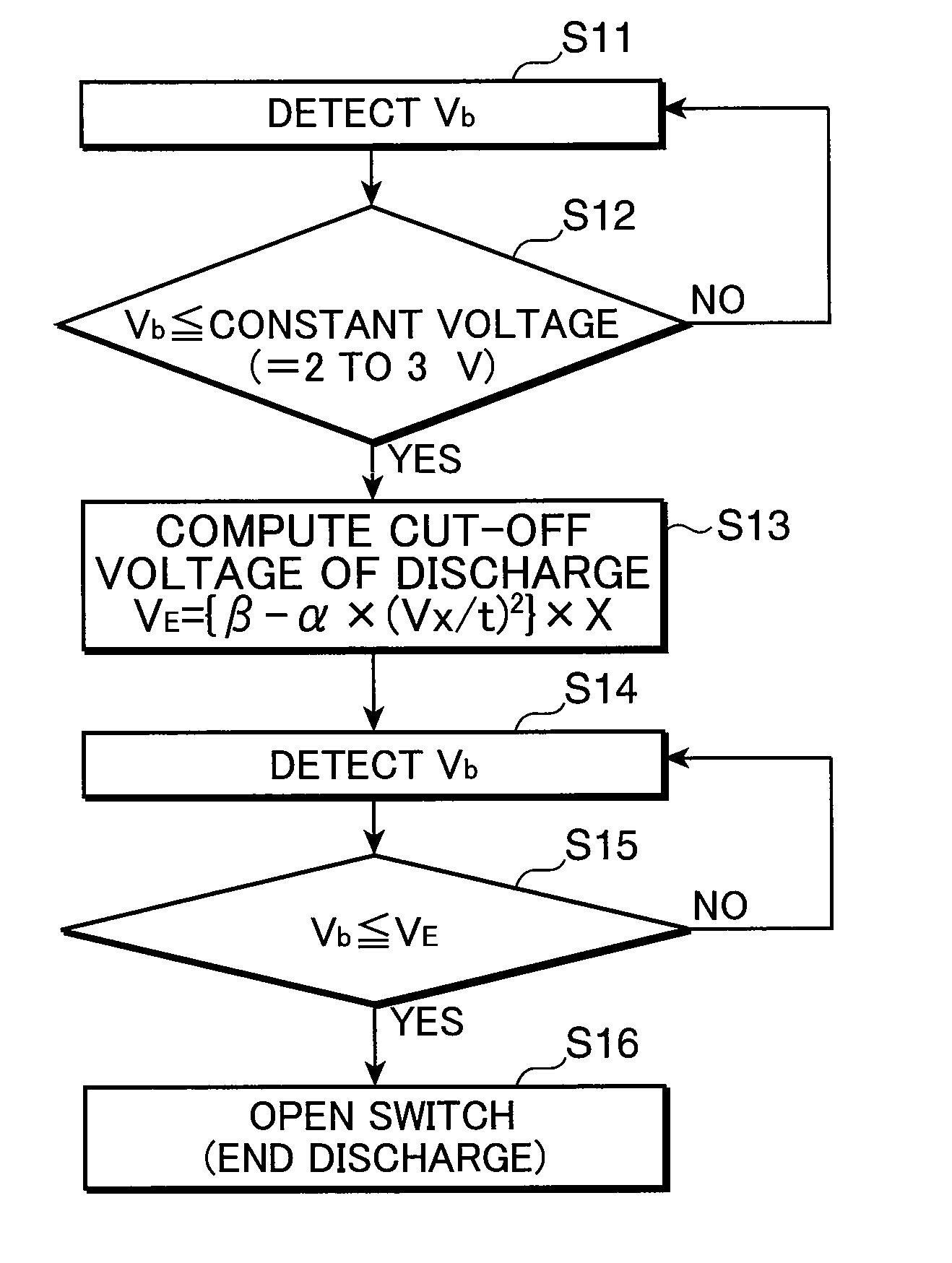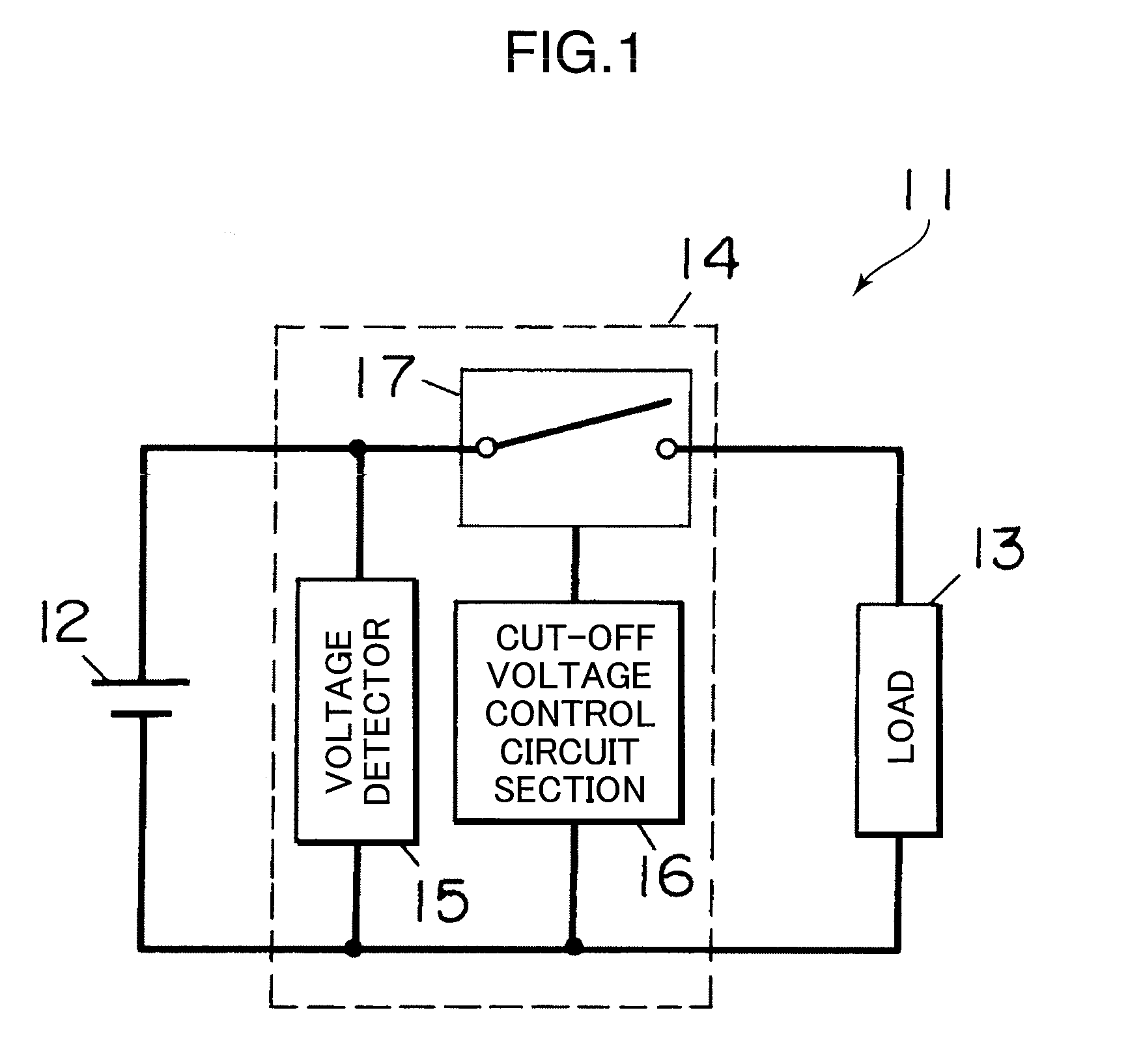Discharge controller
a discharge controller and discharge voltage technology, applied in the direction of secondary cell servicing/maintenance, electrochemical generators, safety/protection circuits, etc., can solve the problems of deterioration of positive electrodes or negative electrode materials, and etc., to suppress the deterioration of cycle deterioration in performances, improve the utilization efficiency of energy as stored, and suppress the effect of deteriora
- Summary
- Abstract
- Description
- Claims
- Application Information
AI Technical Summary
Benefits of technology
Problems solved by technology
Method used
Image
Examples
first embodiment
[0029]The following descriptions explain the first embodiment with reference to FIG. 1. A discharge controller in accordance with the first embodiment of the present invention includes a secondary battery 12, a load 13, and a controller 14 which are connected as shown in FIG. 1. It should be noted here that the load 13 can be disconnected while discharge is not performed. The discharge controller shown in FIG. 1 is suited in applications wherein discharge is performed using a large discharge current of a wide range, in the case of, for example, adopting a heavy load equipment as a load 13, such as a power tool, an electric scooter, assistance bicycle, or the like.
[0030]The secondary battery 12 is a lithium-ion secondary battery using the nonaqueous-electrolyte. The secondary battery 12 may be arranged such that a plurality of cells are connected in series or in parallel, are connected in series and parallel. Incidentally, the number of batteries (cells) to be connected is not partic...
example 1
[0069]The following will provide examples for the nonaqueous-electrolyte secondary battery and the discharge controller adopting the same as a power supply in accordance with one embodiment of the present invention.
[0070]After baking Li2CO3, CO3O4, NiO, and MnO2, these materials were mixed to have a composition of LiNi0.33Mn0.33Co0.33O2. The resulting composition LiNi0.33Mn0.33Co0.33O2 was then baked for ten hours at 900° C. to obtain a positive electrode active material. 100 parts by weight of the resulting positive electrode active material were kneaded with 2.5 parts by weight of the acetylene black, 4 parts by weight of the fluoroplastics binder, and an appropriate amount of carboxymethylcellulose solution using the Double Arm Kneader, thereby producing positive electrode paste.
[0071]The resulting positive electrode paste was then applied onto both surfaces of the aluminum foil with a thickness of 30 μm and then dried. The positive electrode paste was then rolled to have a thick...
PUM
 Login to View More
Login to View More Abstract
Description
Claims
Application Information
 Login to View More
Login to View More - R&D
- Intellectual Property
- Life Sciences
- Materials
- Tech Scout
- Unparalleled Data Quality
- Higher Quality Content
- 60% Fewer Hallucinations
Browse by: Latest US Patents, China's latest patents, Technical Efficacy Thesaurus, Application Domain, Technology Topic, Popular Technical Reports.
© 2025 PatSnap. All rights reserved.Legal|Privacy policy|Modern Slavery Act Transparency Statement|Sitemap|About US| Contact US: help@patsnap.com



